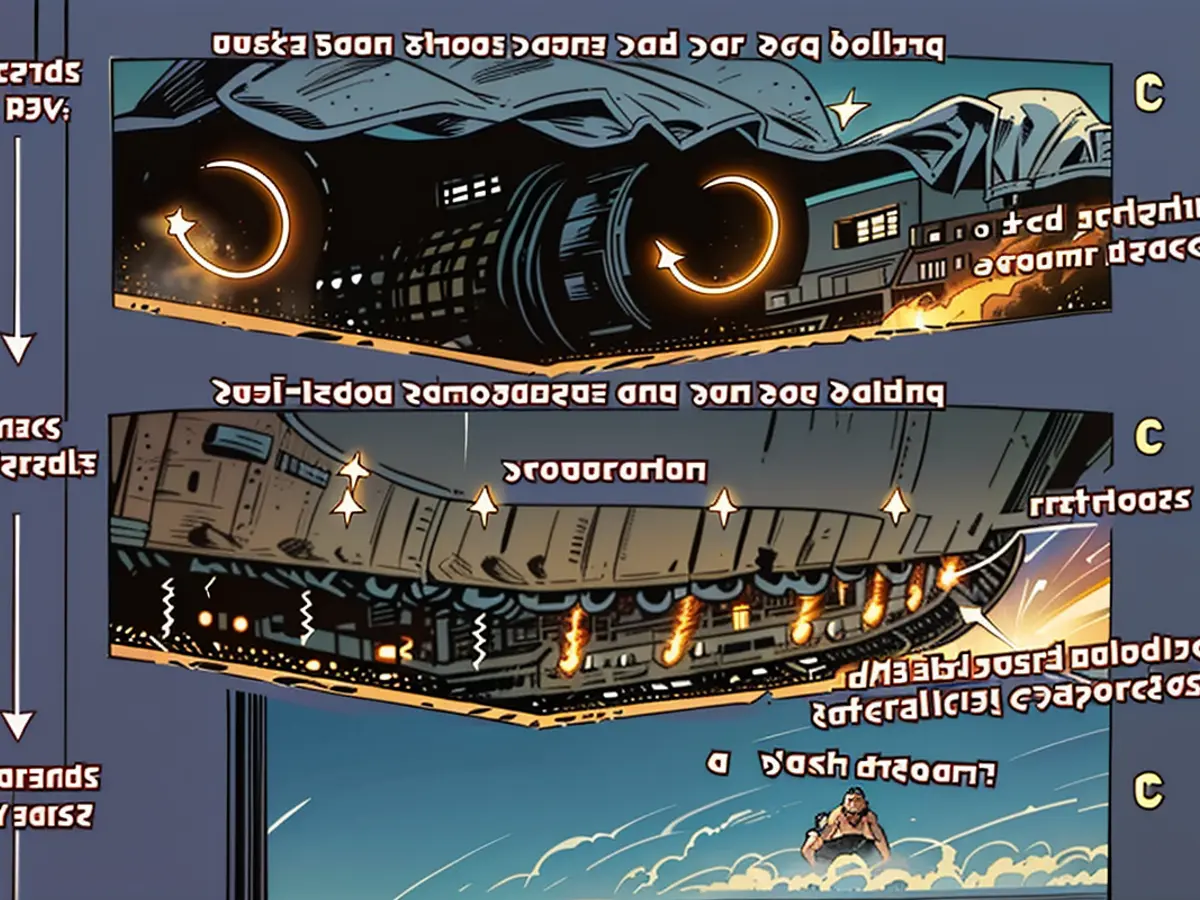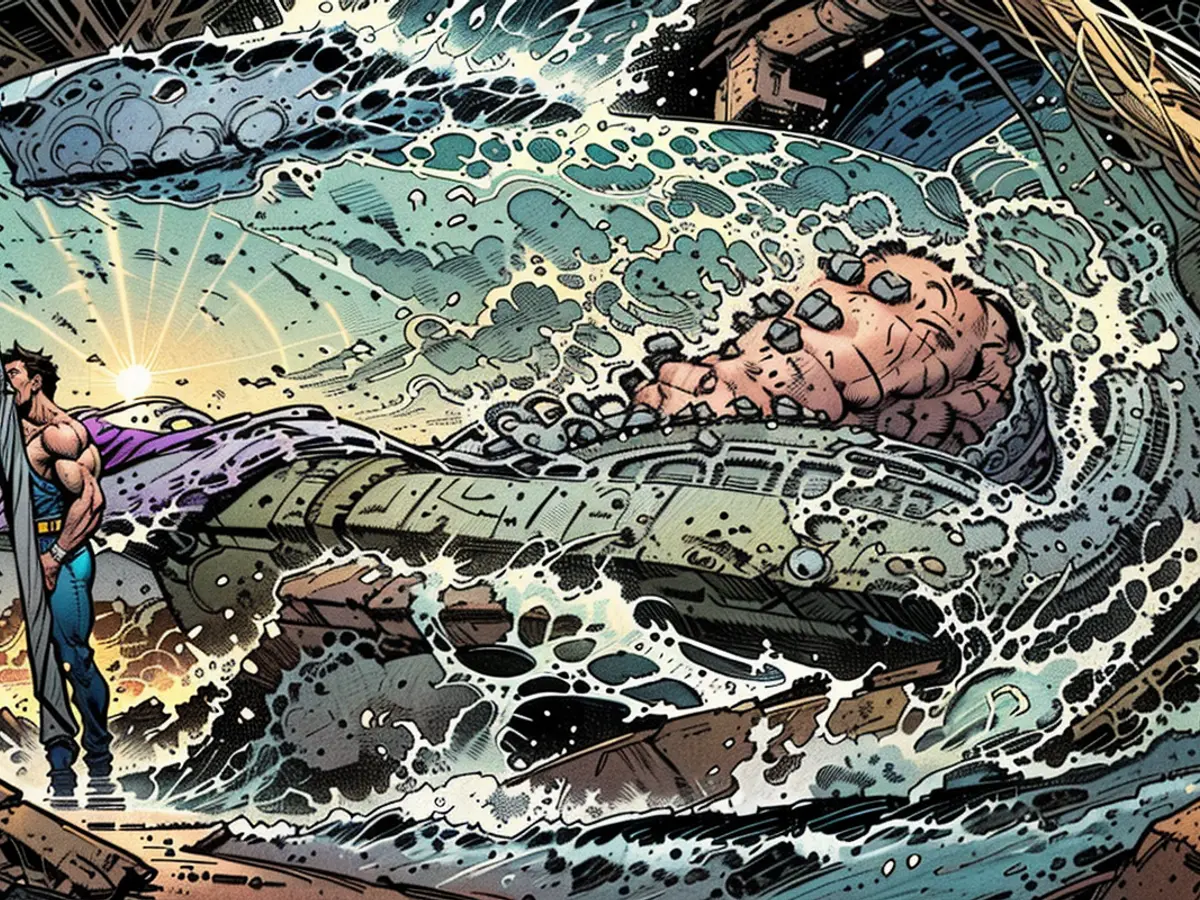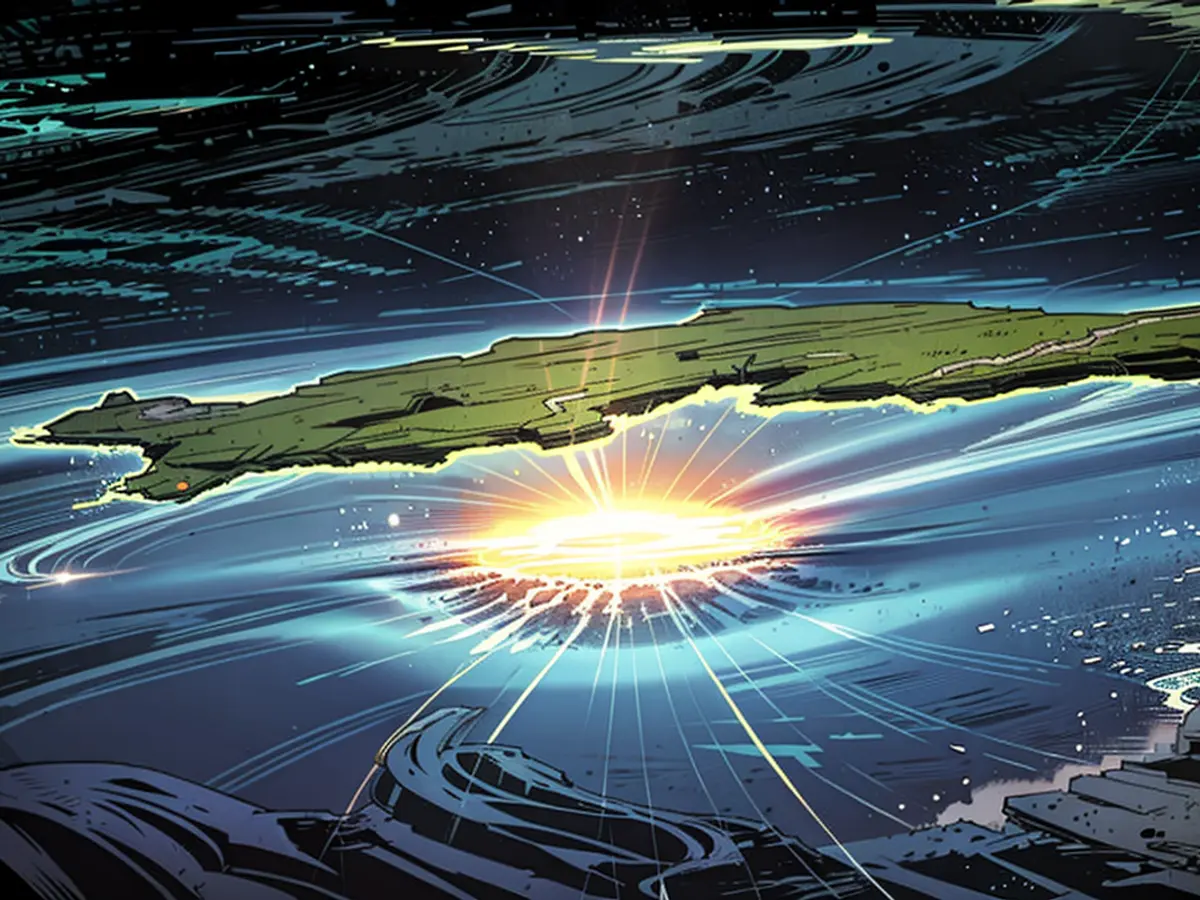A substantial meteor impact left its mark on our newly formed planet.
Around 3.3 billion years ago, a gargantuan celestial body collided with Earth. Its size was substantial, measuring tens of kilometers in diameter, and it was significantly heavier than the asteroid that brought an end to the dinosaurs. This collision possessed immense destructive potential, yet it also played a crucial role in fostering early life on our planet.
During Earth's formative years, approximately 4 billion to 2.5 billion years ago, at least 16 colossal objects, some with diameters surpassing 10 kilometers, struck the Earth. One such striking event, 66 million years ago off the coast of modern-day Mexico, was orchestrated by the Chicxulub asteroid, which was 10 kilometers in diameter and sealed the fate of the dinosaurs and various other species. Although earlier, more violent collisions instigated catastrophic consequences, at least one instance saw life flourishing in the aftermath, as per a study published in the "Proceedings" of the U.S. National Academy of Sciences ("PNAS").
This study, led by Dr. Nadja Drabon of Harvard University in Cambridge (Massachusetts), scrutinized the consequences of asteroid S2's impact, which occurred 3.26 billion years ago. Estimates suggest that this celestial body surpassed the Chicxulub asteroid in power: Its diameter ranged from 37 to 58 kilometers, surpassing Mount Everest in size, and its mass was likely 50 to 200 times greater, leading to commensurate destructive capabilities.
A Geological Record

The site of the impact remains undiscovered. However, the research team, led by Dr. Drabon, investigated its effects on rock formations in the Barberton Greenstone Belt in South Africa. These ancient rocks, dating back up to 3.5 billion years, preserve geochemical traces of the S2 impact. Through comprehensive geochemical analyses of sediments, the group revealed that the heat generated by the impact caused rock to melt, which then solidified in the air and formed tiny spherical deposits, known as spherules, upon hitting the ground.
Following the impact, tsunamis swept the oceans for several days. Moreover, the heat led to the evaporation of parts of the upper ocean layer for over a year. Primarily, however, this catastrophic event altered the primitive life that likely consisted of simple, single-celled organisms, such as bacteria and archaea.
Microbial Growth Post-Impact

According to the researchers, the aftermath of the impact predominantly impacted near-surface microorganisms. In contrast, the inhabitants of the deeper ocean layers suffered minimal harm. On a positive note, the evaporating celestial body provided Earth with vital nutrients, like phosphorus, in the long run. Furthermore, it facilitated the transport of iron from deeper ocean layers to shallow waters, which benefited certain iron-metabolizing organisms, thereby triggering massive bacterial blooms.
"The recovery of life was primarily driven by an increase in iron in the sunlit upper ocean layer and an enhanced nutrient supply, particularly phosphorus," the team declared in "PNAS". "The geochemical data strongly suggest both factors." The adverse environmental impacts were likely brief, "possibly not persisting for longer than a few years to decades."
"We have always assumed that impacts are detrimental to life," Dr. Drabon stated in a university release. "But this study demonstrates that such events can also have benefits. They might even have stimulated life growth."

Just like the Chicxulub impact, 66 million years ago, which led to the extinction of the dinosaurs, laying the groundwork for the rise of mammals that subsequently diversified over millions of years.
The study in "PNAS" revealed that the S2 asteroid impact, around 3.26 billion years ago, though devastating for near-surface microorganisms, was beneficial for deeper ocean life, triggering massive bacterial blooms due to the introduction of iron and nutrients.
Education about such events highlights the complex and often unexpected impacts of celestial collisions on Earth's evolution, challenging the common assumption that such incidents are always detrimental to life.







